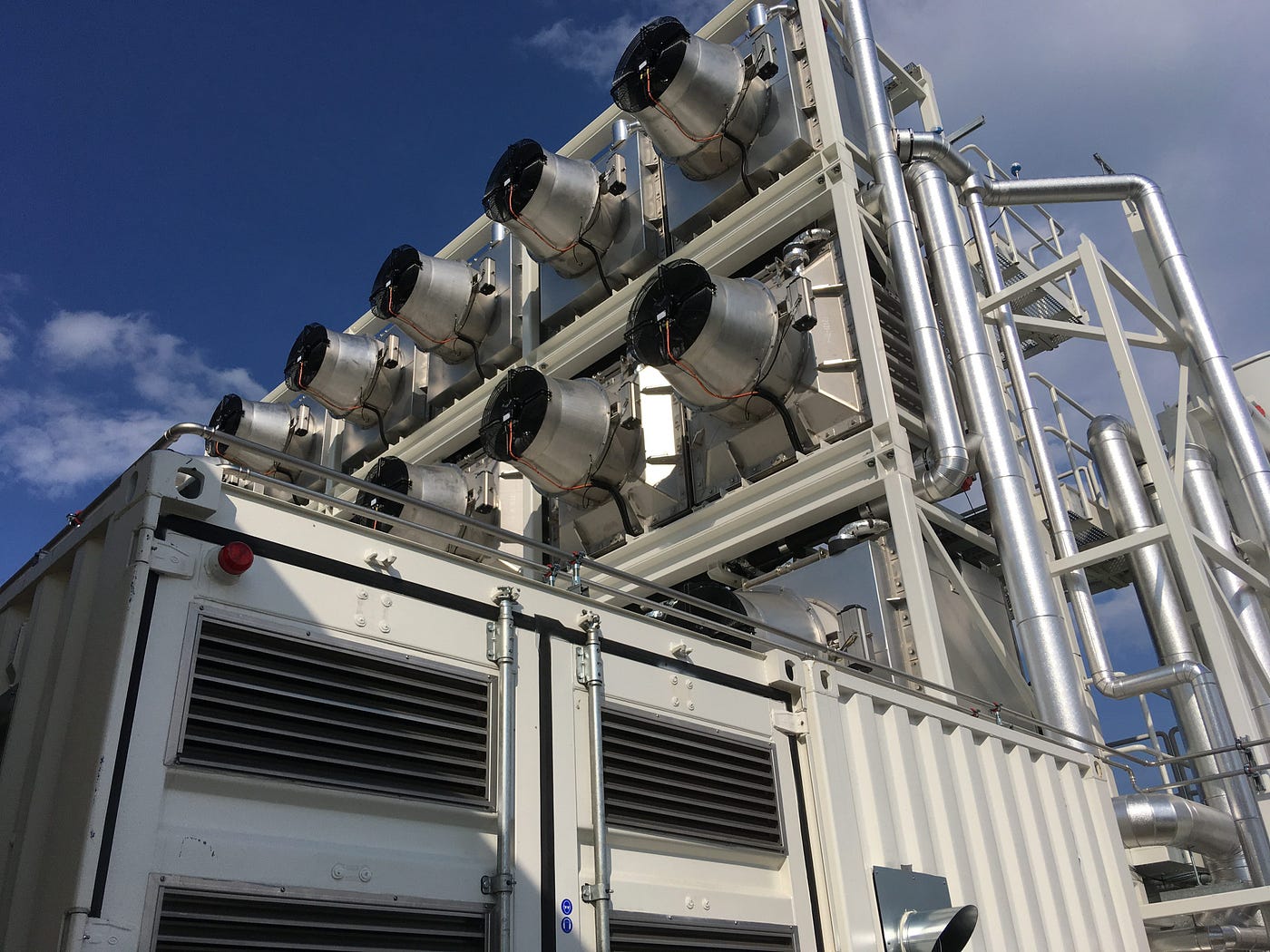
In a bold move at the intersection of climate change mitigation and innovative technology, the Biden administration is considering a groundbreaking project – the Wyoming Regional Direct Air Capture Hub. This initiative, spearheaded by the climate technology company CarbonCapture, aims to extract carbon dioxide from the atmosphere using energy generated by a new type of nuclear power plant. While the potential benefits of this endeavor are substantial, some experts express concerns about the inherent risks associated with merging two relatively untested technologies: direct air capture (DAC) and small modular reactors (SMRs).
The Wyoming Regional Direct Air Capture Hub:
The hub proposal, submitted by CarbonCapture to the Department of Energy (DOE), stands as a frontrunner for a substantial $500 million award. The project, if successful, holds the promise of being a game-changer by removing carbon dioxide from the air without contributing to emissions itself. CarbonCapture and its team have already secured $12.5 million from the DOE for an engineering study over the next two years, emphasizing the government’s commitment to advancing direct air capture technologies.
Direct Air Capture and Nuclear Power:
Direct air capture, focusing on removing carbon already in the atmosphere, has gained momentum as a critical climate solution. However, only two commercial-scale DAC facilities operate globally, underlining the experimental nature of the technology. On the other hand, small modular reactors, hailed as a more flexible and cost-effective alternative to traditional nuclear plants, have faced setbacks, such as the cancellation of the first expected commercial SMR by NuScale Power in November. The confluence of these two nascent technologies has raised eyebrows among experts.
Concerns and Caution:
Wil Burns, co-director of American University’s Institute for Carbon Removal Law and Policy, expresses reservations about the integration of direct air capture and small modular reactors, calling it “risky business.” He emphasizes the need for caution, urging the federal government to thoroughly assess the potential complications and risks before committing substantial funds. Burns argues that the government should carefully evaluate the viability of relying on novel nuclear plants for a DAC proposal.
CarbonCapture’s Perspective:
In response to concerns, CarbonCapture downplays the significance of small modular reactors in the final hub plan. Patricia Loria, the startup’s vice president of business development, suggests that small nuclear reactors would be “nice to have” when the hub reaches full capacity in the 2030s. Despite this reassurance, skeptics remain wary, emphasizing the importance of a well-thought-out strategy before channeling additional funds into such a pioneering project.
The Wyoming Regional Direct Air Capture Hub represents a bold step towards addressing climate change by combining direct air capture with nuclear power. While the potential benefits are substantial, experts caution against underestimating the risks associated with merging two evolving technologies. As the Biden administration considers allocating significant funds to this project, a careful evaluation of the potential complications and uncertainties is imperative to ensure the success and safety of this ambitious endeavor. Only time will tell whether this marriage of direct air capture and small modular reactors will prove to be a visionary solution or a risky experiment.
More about the Company CarbonCapture:
CarbonCapture is at the forefront of pioneering direct air capture (DAC) technology, designing and implementing machines capable of forming extensive arrays to extract significant volumes of carbon dioxide from the atmosphere. Distinguished by a patented modular open systems architecture, the company’s DAC platform stands out for its plug-and-play upgrades, mass production capabilities, limitless scalability, and swift technology iterations.
The core of CarbonCapture’s systems lies in their ability to capture atmospheric carbon dioxide, offering two main pathways for its utilization. Firstly, the captured carbon dioxide can be permanently removed from the atmosphere, contributing to critical climate change mitigation efforts. Secondly, the company’s technology facilitates the utilization of captured carbon dioxide in the production of low-carbon synthetic fuels, as well as its integration into the creation of eco-friendly materials such as concrete and other industrial products.
Key Features of CarbonCapture’s DAC Platform:
- Modular Open Systems Architecture: CarbonCapture’s DAC platform boasts a patented modular open systems architecture, providing a flexible and adaptable framework for seamless integration of components. This architecture allows for easy upgrades, ensuring the technology remains at the forefront of advancements.
- Plug-and-Play Upgrades: The platform’s plug-and-play functionality simplifies the process of incorporating upgrades. This user-friendly feature enhances the system’s versatility, enabling swift adjustments and improvements to meet evolving needs and technological developments.
- Mass Production Capability: CarbonCapture’s commitment to mass production ensures that their DAC machines can be deployed at scale. This capability is crucial for addressing the monumental task of removing large quantities of carbon dioxide from the atmosphere.
- Unlimited Scalability: The DAC platform’s scalability is a key strength, allowing CarbonCapture to tailor solutions to various scales of carbon removal projects. From localized initiatives to global endeavors, the technology can be adapted to meet diverse demands.
- Rapid Technology Iterations: CarbonCapture prioritizes continuous innovation through rapid technology iterations. This commitment ensures that the company stays ahead of the curve, integrating the latest advancements in DAC technology to enhance efficiency and effectiveness.
Utilizing Captured Carbon Dioxide:
CarbonCapture’s systems offer versatile solutions for the captured carbon dioxide. The company’s commitment to permanent removal aligns with global efforts to combat climate change. Simultaneously, the ability to repurpose captured carbon dioxide for low-carbon synthetic fuels, as well as its incorporation into environmentally friendly industrial products like concrete, reflects a holistic approach towards sustainable practices.
CarbonCapture’s groundbreaking DAC platform represents a significant leap forward in the quest for large-scale carbon removal. With its innovative features, including a modular open systems architecture, plug-and-play upgrades, mass production capability, unlimited scalability, and rapid technology iterations, the company is poised to make a substantial impact on mitigating climate change. By providing solutions for both permanent carbon removal and utilization in sustainable industrial processes, CarbonCapture exemplifies a comprehensive and forward-thinking approach to addressing the challenges of a carbon-intensive world.
Source: CarbonCapture Inc. | Direct air capture for a net zero future





